Bigger wheels – all off-roading fans want them. Larger tires make the vehicle look cool and turn it into a beast. A truck/SUV with a set of huge tires can easily overcome muddy trails, rocky paths, and steep climbs. Now, if you’re serious about conquering the most challenging terrain, new tires are a must. But what about using a suspension/leveling kit? Don’t you have to lift the ride for big wheels?
Or maybe that won’t be necessary? Well, there are a couple of tried-and-true tricks for making it work without investing in an expensive lift kit. You can adjust the torsion keys, get a couple of spacers, roll the fenders, and more. So, if you’re ready, let us go ahead and answer the big question: can I put bigger tires on my truck without a lift, or not?
#1: Modifying the Torsion Keys
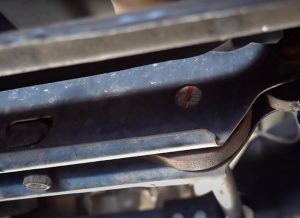
That should be enough to accommodate 30-31-inch tires. So, what you should do first is use a jack to lift the front of the truck. Essentially, the torsion keys are big bolts that hold the torsion bar – a long, round metal bar. By default, the bolts aren’t very tight. As you’ve probably already guessed, we need to make them tighter. That way, the torsion bar will push down on the suspension system, raising the front of the vehicle.
The rule of thumb here is to make sure the two bolts are turned the same. I recommend doing half-turns on each so that you can keep track of everything. Use a ratchet for that, and, again, leave about an inch or two – don’t max it out. When you’re done, lower the truck down by removing the jack. And remember: adjusting the torsion bar will only lift the front. Furthermore, it will put a lot of pressure on all the suspension components. Also, consider the benefits of using Silicone Spray on Tires to maintain their appearance and protect them from harsh elements.
#2: Using Wheel Spacers
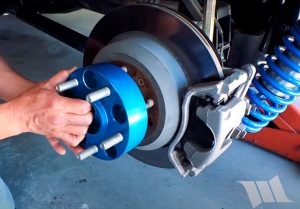
To put things into perspective: common sizes for US-made trucks are 19.5 and 24.5 inches. So, yes, the difference will be pretty big and you’ll instantly feel the added height when you get behind the wheel. And the best thing about spacers is their low cost. Right now, one can get a decent package of four for 80-100 US dollars, and they will serve for many years. The installation process will take 1-2 hours, or longer, but it will be worth it.
#3: Cutting the Fenders
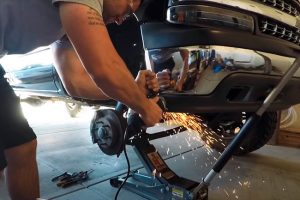
In my experience, rotary tools are the best choice for this job. Also known as the Dremel tools, they’re pretty great for “domestic cutting” and are available for less than $100. At a slow pace, you’ll be done cutting the wells in 30-40 minutes, or even less. Obviously, you’ll need to trim all four fenders for this to work. A quick note: back in the day, fenders were mostly crafted from metal – the sturdy kind.
However, these days, they’re manufactured from thermoplastic. That’s why the Dremel works on them. With that said, you gotta make sure the tool’s blades are sharp enough. Otherwise, they’ll keep breaking and you won’t get a clean cut. Some folks prefer to use pocket or kitchen knives, but I wouldn’t recommend that, as you may end up hurting yourself.
#4: Rolling the Fenders
Does cutting the wells seem a bit too extreme? Then how about rolling the fenders? When done correctly, this can also free up space for bigger tires without any lift, leveling, or suspension kits. So, what is rolling all about – how do you do it? There’s nothing hard about this: we just have to bend the fender’s inner “lip”. By default, it has an L-like shape. What we’re going for here is changing it to a V-like shape.
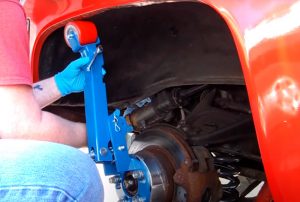
That will force the well to flip and, well, turn into that V shape that I was talking about. A quick note: a bat isn’t the most elegant tool, of course. If you’re not careful, the fender will be damaged and look pretty bad. Therefore, it might be wise to invest in a so-called fender roller. Classified as a tire repair tool, it will do a much smoother job. Right now, it’s available for 150+ dollars, which is a bit expensive, but still more affordable than a trip to an auto shop.
Once you’re done, the wheels will have lots of extra room to move around without constantly getting in contact with the wells and wearing off over time.
Conclusion
So, there you have it – my how to make room for bigger tires without an expensive lift guide. Cutting and rolling the fenders, adjusting the torsion bar/keys, and using wheel spacers can help you do just that. All four techniques are very useful and have proven their worth in real-world tests. And it’s up to you to decide which one to go with. If you’re on a tight budget, I would recommend trying to adjust the torsion.
Cutting the fenders won’t cost a pretty penny either, but only if you’re ready to work with a knife. Rolling the fenders takes a lot of time and effort; some folks prefer to let the pros handle it. Last, but not least, wheel spacers guarantee a nice lift and can be bought for 100 bucks tops.

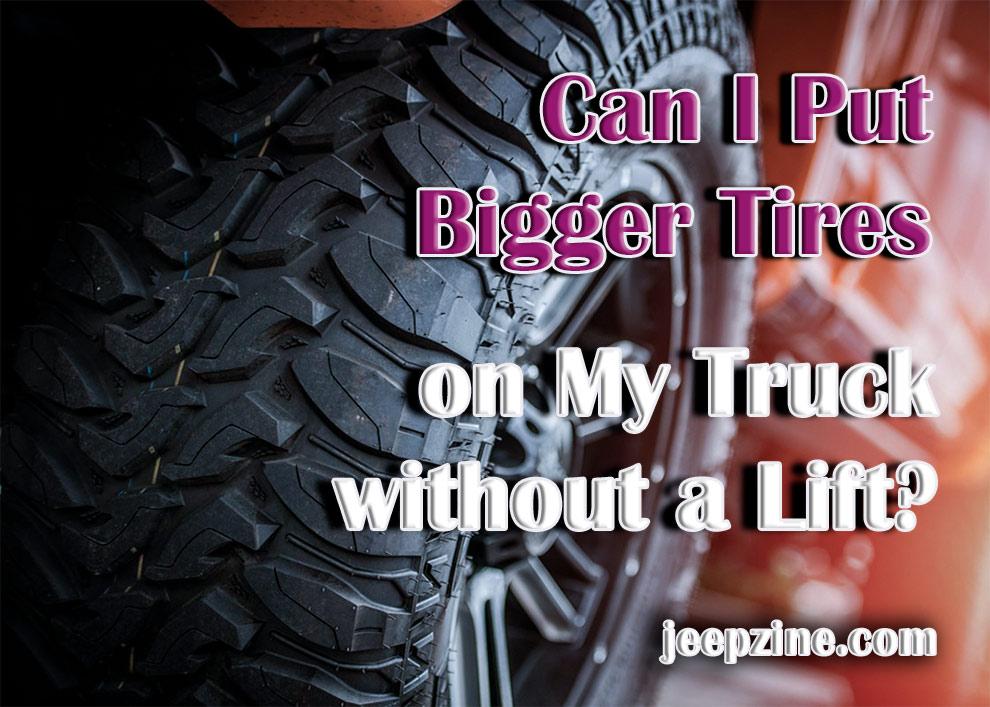
Add Comment